#Proxima is named for Proxima Centauri
Text
Wrote down a little bullshitted up lineage of primes thing as a treat, and I threw in a few of primes for a gap in between Prime Nova and Nova Prime, the latter is in my list as "Nova Prime 2: electric boogaloo" which is hilarious.
The oc primes:
Prime Proxima, Prime Plerion, Caerulus Prime, Cepheidis Prime, Asterism Prime, Luminus Prime, and Theta prime
#i am aware Luminus Prime is luminous minus the O. that was on purpose because i wanted another –minus prime#I've thought so much about calling a character theta btw#most of these guys and gals in my mind had relatively short reigns as primes and the majority did not have the matrix#(if any)#yes 5/7 use she/her pronouns bc i ran with the first pronouns that popped into my mind with their names#it's an interesting idea that for a while the title of prime came before the first half of the name rather than after#on my list you can also tell when either the primes started to become shittier people or at least when history recording the shitty stuff#i am aware that Caerulus means blue. he is the blue prime.#some of them are named for astronomy terminology!)#Proxima is named for Proxima Centauri#Cepheidis is named for Cepheid Variables / Cepheids which are a type of star#an Asterism is a star formation smaller than a constellation#aaand a Plerion is another name for pulsar wind nebulas!#... the name Imperator is calling to me again though.#again a word i like the sound of and i just think it's bullshit it's wasted on an invalid taxon#maccadam#transformers#ocs#basically all ocs for the sake of ocs#nova prime
10 notes
·
View notes
Text
My name's Doug Roberts, I'm running for a seat of Congress because I'm just a simple man. A simple man, with simple, traditional American values, which I learned *remembers that he grew up on the USS Independence, a sleeper ship launched by the secret space program on a colonization trip to Proxima Centauri in the year 1959, only to return to Earth after passing through a mysterious barrier in space many decades later, leaving them confused & haunted by the implications of a barrier keeping humanity in their system, and unmoored from their own species' progression* from...church...?
88 notes
·
View notes
Text
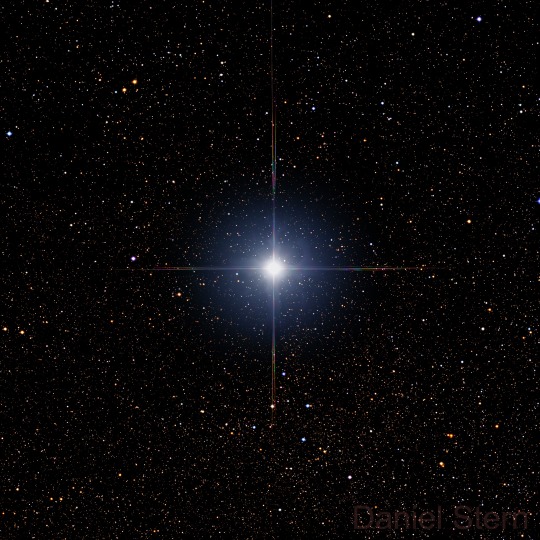
α Centauri AB, two of the nearest stars to Earth // Daniel Stern
This star system is made up of three stars. The two in this image are Rigil Kentaurus (α Centauri A) and Toliman (α Centauri B). Proxima Centauri (α Centauri C) is out of view.
The name Rigil Kentaurus is a Latinization of the Arabic name Rijl al-Qinṭūrus, meaning "foot of the centaur."
The name Toliman comes from the Arabic phrase aẓ-Ẓalīmān, meaning "the ostriches."
#astronomy#astrophotography#star#star system#triple star system#alpha centauri#rigil kentaurus#toliman#etymology#centaurus
99 notes
·
View notes
Text
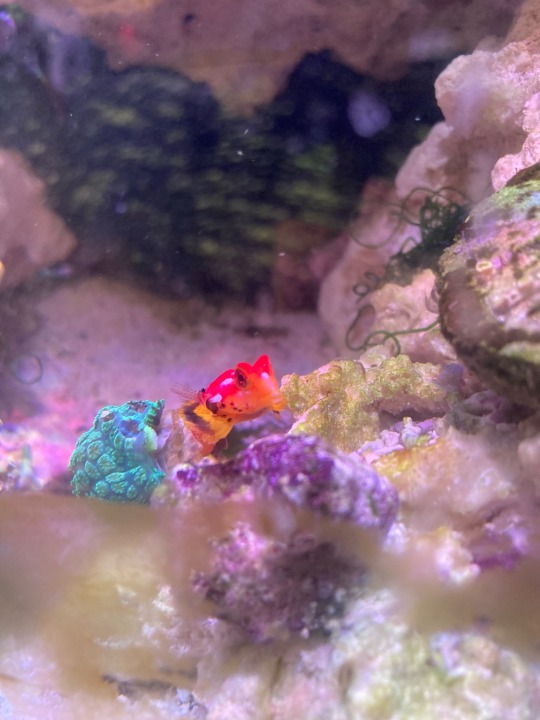
ok gang. I've already named the new pistol shrimp (her name is Lex Prime and i'm exclusively referring to the eggs on her tail rn as her baby bullets) and, as is tradition here on orowyrm.tumblr.edu, I've crowdsourced some names for the other newest addition to my reef tank, a young male ruby red dragonet (or red scooter blenny, if you prefer) and hand selected my favorites from y'all's replies. now it’s time for YOU, the people, to
feel free to rb. i need as many opinions as possible within the next 24hrs before he is officially named
63 notes
·
View notes
Text
a little thing that annoys me about Starfield is that they’ve named αCenB ‘Toliman’ but they’ve named αCenA just ‘Alpha Centauri’ rather than Rigil.
like. No. “Alpha Centauri” means both of them, or all three, depending. you’re doing Rigil a disservice by only using Toliman’s name, and you’re doing Toliman a disservice by insisting Rigil is the real αCen.
and not to mention that the third star, Proxima bloody Centauri, one of the most famous things about the αCen System, just isn’t in the game.
i hate patriotism i hate chauvinism but tbh i’m gonna become an Alpha Centauri Nationalist because of this blatant disrespect
87 notes
·
View notes
Text
pt IV the wedding dress: crowley's cufflinks
Fuck me the brainrot is UNREAL. As is the amount of time I spent on these buggers. Also, if Arthur asks any of you, you never saw this post, okay? I was off tumblr doing "resting" and "not working" and all those things he told me to do.
Sooo in the previous posts we discussed (I infodumped) the overall top half of the dress, the shirt and the ruffles of said shirt. So now as is the natural pipeline we are discussing the cufflinks of the shirt.

Above is the scrawling I did, I don't know if you remember the day, but I was on a lot of caffeine and crying about the cufflinks while you all told me to go the FUCK to sleep.


VERSION 1 SYMBOLISM: So the first one which we shall call Version 1 (creatively) has the traditional Celtic triquetra knot. I'd looked up Celtic symbols and asked you maggots as well because Scotland has Celtic history and well, Edinburgh episode, David Tennant etc. The triquetra knot had a lot of symbolism of three's: past present future, body mind soul, maiden mother crone, youth adult old age etc.
ALPHA CENTAURI ALLUSION: Also, the three diamonds, one at each tip of the knot: this is because Alpha Centauri, where Crowley wanted to take Aziraphale to and live there together, is a triple star system. Alpha A and Alpha B, the main stars, orbit each other, with Proxima Centauri (so named because it's the closest star to our Sun) orbiting both of them. So the knot does give a kind of orbital path notion, even if not accurate, and the diamonds are the stars. It would probably be in silver, with the underlying base being black.
PROBLEMS WITH VERSION 1: However, there are issues with Version 1. For one thing, the triquetra knot is more common in present day Ireland and England than in Scotland. For another, early Christians adopted (appropriated) the triquetra to symbolise the Holy Trinity. So. Perhaps not.
And clearly we can't have issues with the intricate detail of the fictional cufflink's fictional symbolism in a fictional wedding of a fictional character that is not canon. So then I made changes:
VERSION 2 SYMBOLISM: Version 2, while retaining the Alpha Centauri diamonds and orbit symbolism, has a different Celtic symbol. This is the triskele, a symbol that is more popular in Scotland than the triquetra, as you maggots told me. It has three interlocking spirals, representing the three domains of material existence (earth, water, sky), the cycles of life and reincarnation, and movement of time and the universe. All of which feels exactly like Starmaker's journey to becoming Crowley. The Alpha Centauri stars are now nestled in the spirals of the triskele, with a more rose-like base that could be emerald under the silver.
So. Yes. Those are the cufflinks that I am sure were very highly anticipated /s. Idk why I do this. But I love you Crowley.
Have a wonderful day maggots <3 If you do happen to be interested in the wedding dress, all the wedding posts are tagged on my blog with weirdly the nightingales wed.
#good omens mascot#weirdly specific but ok#weirdly the nightingales wed#asmi#maggots#good omens#good omens fandom#crowley#wedding dress#aziracrow#ineffable spouses#dress design#cufflinks#alpha centauri#good omens brainrot#starmaker#angel!crowley
24 notes
·
View notes
Note
trick or treat!
TRICK!
The Sun stared down at his bloodied hands. The man below him still let out shallow breaths, but he was too tired to even fight back against the Sun.
He threw punch after punch at the gray cowboy below him. Blood and gore splattered over the two. The Sun frowned, he didn’t know if he should be happy that the dark red liquid covered the disheveled face the Sun had disfigured.
Spirits raved their screams around the two. They were getting the blood they craved.
If the Sun listened closely he could make out specific voices and place names to them. The Red King and his hand, a timekeeper and his friends, the Stars and the caged canary he called his husband, a lone wolf who got driven mad when his house went up in flames. There were twelve voices in total.
The Sun thought of them not as distant acquaintances now. He wouldn’t be able to think of them as more without fully breaking, he thought.
While the Sun was small in stature he carried a lot of weight, mostly in his heavy satchel- although that sat just outside the ring of cactus he was currently sitting in- and in his giant multi-colored parrot wings. His bones were hollow, but his giant wings held a good amount of weight.
He continued to throw punches at the gray man below him. The gray man who was once his friend- a sister star the Sun split from. Maybe once a brother and ally, but now was nothing more than a corpse the Sun sat over.
Maybe the body below the Sun was Proxima Centauri, maybe he was a planet like Mars—no, Mars was someone else. Maybe he was Mercury. Maybe something bigger.
It really didn’t matter what he was.
He was dead.
Beaten to death by the Sun. The Sun punched his stupid face that he had been stuck with for weeks. The Sun thought he would be happy when he would finally get to leave the body below him. Not like this, he sobbed over the man.
Maybe he screamed. Maybe he screamed curses in his mind. Maybe he only let out hiccups of weeps with his shaking breaths.
He wasn't fully aware of himself until he shot up from his frantic crying and wiped his tears as the spirits whispered in his ears.
One more to go. They said in unison, One more life to take he filled in the blank.
The Sun had taken eight lives in the past week.
While only two were permanent deaths, he still had six different people's blood on his hands—twice the amount of blood for the body under him and the fallen angel who cared for all.
He honestly couldn't remember who he was now. Who he was before he turned red before he accidentally led a creeper to kill—Who he was before he forced himself into this game.
Everything from before blurred in his mind. A lot of nothing.
The same nothing he found when he let himself fall off the nearby cliff (Formally called Pride Rock. He remembered it being called that) and landed on the sandstone below.
The same nothing that he found in the void. The void, he guessed, that showed the after. After one died.
He sent two people here to this lonely solitary confinement.
Maybe he should be glad he sent them here. The sooner they didn't have to deal with everything the Sun hated himself for doing. His hands were dirty and he would never be able to properly wash them.
The Sun opened his eyes.
When had he closed them?
He was tired, like he just slept for months straight.
The Stars stare. Not at the Sun, not at anyone. The Stars stares forward and takes off, just like everyone else when it is time. The Sun kills the most he ever had that time. Take the pain away from others.
The Stars is the last standing and the Sun strikes him down.
The Sun opened his eyes.
Had he really closed them again?
The Moon cries. She screams at the Stars, at the hand, at a zombie with red curly hair. She cries for her late dog with a red collar. She cries for her soulmate that left her. She cries for the sake of crying.
The Moon watches as the Stars sacrifices himself for her. Killing them both. It’s counter-productive. Maybe the Moon will forgive him.
The Sun opened his eyes.
Closing them seemed to be a pattern.
Mars pulls at the ocean’s tides. He’s mad. He smirks, a hand without a head, a hand without his king. Mars is crazed. Mars is manic.
He betrays the Stars and a demon, running back to the shores he called home where he runs out of time.
The ocean pulls at him while the sand trickles down an hourglass.
The Sun opens his eyes.
The pattern repeats.
He’s tired.
A statue looms above him with secrets that are whispered in his ears. It has a mask with a familiar symbol on it. The Sun closes his eyes.
The mask is still burned into his mind. He knows. He can’t escape. He tried before and it worked out so well. So, so, well that, now, he’s stuck in this pattern of death and destruction.
He opens them again.
The Sun is stuck.
He can only hope to spare his friends from the pain he went through the first time around. He can only hope to kill them before they have to go through the pain of beating their closest friend to death in a ring of cacti in the burning hot sun.
#take some silly little angst#IN a never seen before fic i haven't gotten round to posting!#trafficblr#traffic smp#grian#watcher grian#grian fanfic#traffic series fanfic#3rd life#last life#double life#limited life#secret life
38 notes
·
View notes
Text
thank you to both @mundanememory nd @flourbray for the tag! i do so love this game
make a new post with the names of all the files in your WIP folder, regardless of how non-descriptive or ridiculous. let people send you an ask with the title that most intrigues them, and then post a little snippet or tell them something about it! then, tag as many people as you have WIPs.
this time i will fix myself i Will organize by fandom
tennis: (wish i had more but these are longstanding ... new r66 should be in may though)
Route 66
ruins of a softer world
papier mache cacti
cycling:
proxima centauri
crybaby, you fool
Slow Tigers
f1:
REDACTED (for a fandom event)
Little Hawk
other:
in the country of resurrection
Helplessness Blues
it's a lot of the same as before + i'm only putting down fics which have minimum a part written, so there's more WIPs than this haha tagging this back over to tennis mayhaps? @bluespring864 @ispeakmorelanguagesthanyou @yoellglia @rainbowcat-writes @melxncholyman and ,,,, that's all i got if you want to do it by all means
12 notes
·
View notes
Text
watched renjun and jisung talking about aliens on look at science!
based on the previews, they are getting DEEP into scifi which i am really excited about. ever since i finished reading the remembrance of earth's past trilogy by liu cixin (aka the three body problem trilogy) i've been thinking a lot more about space and humanity (whereas it used to be a topic that i avoided because it freaked me out lol). and i'm also reading the children of time by adrian tchaikovsky which discusses similar themes of humanity in space and such. anyway i am excited to see what discussions this group gets up to!
wow we have a few scientists on the panel. other than the host jung youngjin, we have an astronomer ji woongbae, a physicist kim beomjun, and a biologist/astrobiologist kim eungbin. i'm really excited haha. i'm such a nerd.
aw the scientists are so earnest, kim eungbin studied up on nct before this show.
aw they're discussing renjun's chinese name. i wonder if this is a topic that would be more popular among an older audience :P
spacemates <3

deep thinkers :3

aw jisung is a fan of the show!
oh you little cornball <3

first topic: do aliens exist?
yo jisung is getting DEEP. so he thinks there is other life in the universe, but humanity as a whole may not be able to interact with them by the time humanity even comes to an end.
the host jung youngjin is doing a lot of the facilitating which makes sense seeing as how he seems like a pretty easygoing speaker.
renjun's theory on aliens is that it probably won't be something we can really fathom because humans' impressions of things, and humans' imagination is based on what we know on this earth.
jisung is a fan :3

ji woongbae thinks that renjun and jisung have really deep thoughts about their theories haha. kim beomjun said that jisung and renjun have probably thought about this before.
it seems to me that renjun is more interested in the social aspect of science and science fiction which i think matches his personality

kim eungbin brings up a good point, he mentions that life forms might not exist at the same time as us. so maybe a civilization existed somewhere else, but billions of years before or after humanity has run its course. which also falls into the 'not being able to interact with them' theory that jisung was talking about.
jung youngjin @ scientists: ...y'all are sus
lawki = life as we know it
lawdki = llife as we don't know it
this is really interesting, because i guess the concept of lawdki implies that life exists in ways different to what we know on earth which is creatures who breathe, eat, consume energy, etc. but perhaps there is a kind of extraterrestrial who is sentient but shares nothing else in common with life on earth.


i went back into boda's channel and i noticed that the older videos don't have english subtitles. i wonder if they knew they'd get a large audience for this video and that's why they added subtitles lol.
second topic: is there a star you want to go to?
i looked up starwalk and it looks like it's a stargazing guide
jisung doesn't want to go to a planet with no oxygen or water ^^;;

jung youngjin: would you go to mars?
jisung: yes, definitely
jung youngjin: even if you couldn't come back?
rensung: !!!
jisung said he'd go to mars when he's 40...so he'll spend his youth here on earth i guess XD where the fun things are XD
taking a page out of mark's book (it's only just begun etc. etc.)

kim eungbin said jisung's a philosopher lol

renjun said he'd go to mars too :o i actually didn't expect that
LOL do it for the gram

i get what he means though, it'd be one of the most unique human experiences ever, going to mars as a human

i am with you my guy

moving the discussion on to earth-like planets in the universe. they exist, but of course they are all too far.
learning that it'll take 100,000 years go to go the closest star X'D that's with our current technology

so this star proxima centauri (that's 100,000 years away) is smaller and cooler, but the earth-like planet is closer to it
wait i need to wrap my head around why the kid will be 18 lol. the way i understand it, if you are on the other planet and you are looking at a 10 year old child on earth, then that child is actually 18 years old because if you view earth from the other planet, you're seeing earth from 4 years ago. so if you see a 10 year old on earth from the other planet, then the kid is actually 14 years old. and then it takes another four years to travel? please feel free to explain this to me because i want to understand XD

ok this second question about seeing light while travelling at the speed of light is just boggling to me
lmfao this is me. i am just thinking emoji always

host jung youngjin has a lot of really cool questions, though we probably don't have time to explore all of them
ji woongbae says that whether a planet is fit for life, and whether life actually exists there are two different questions
renjun asking about how objects that are sent into space can avoid collisions
third topic: what would you think if humanity discovered other life forms in space?
now we're going into discussions of what life forms on other worlds would look like. how would they evolve to suit their environment? entropy, ability to react, ability to learn/remember were brought up
renjun thinks confidence is important for a life form, and he's not wrong imo. all life involves risk, but i think confidence in this case means a creature understanding their abilities before they do a thing, whether it's getting food, scaling their terrain, etc.
LMAO biologist kim eungbin quoted jurassic park

jung youngjin keeps giving the scientists shit for being very agreeable with renjun and jisung XD i mean, i know why they do it, they don't want the fans to get on their asses ^^;;
now discussing how life evolved from microorganisms on earth
so all of these are hypotheses, but we still technically don't have an exact formula for how life came to be
me watching this show

i understood that reference (plato: all i know is that i know nothing)

fourth topic: what would you need for a spacecraft to travel in space for 5,000 years?
physicist kim beomjun mentions a book "i am schrodinger's cat" by won jongwoo where humanity passes several civilizations on a ship. i came across this concept as well in death's end by liu cixin.
omg in this short story, humanity has forgotten why they set out on earth ToT that's terrifying because what if they run out of resources and haven't found a planet yet ToT i tried googling this novel but didn't find much so it might be a novel that hasn't been translated to english.
big science fiction guy in the haus

lol what a poser, jisung hasn't even watched dune 2 yet XD (i know, he's a busy guy, i'm just giving him shit)
astronauts have to keep their bodies strong on their way to mars because their bodies may grow weak from the 7 months of zero gravity on their trip there. and mars does have some gravity, so if they don't keep their bodies in shape, they might not even be able to handle mars' gravitational pull.
astronauts on the space station spend a third of their time on working out! wow. brains AND brawn.
the reason why space stations in movies spin is because that is how they create artificial gravity (is it the centrifugal force?)
microbes are affected by gravity too :o
fifth topic: why do humans want to procreate? what is the survival instinct?
kim beomjun says that life doesn't particularly have any goals. he mentioned evolutionary psychology and how back in the day, people who didn't want children didn't end up having them, and that we only exist because our ancestors had children. that made me think that the reason why we think living creatures want to continue their bloodlines is confirmation bias. we only see the results of those who decided to procreate. maybe a lot of people didn't want to have kids back then, but we would not necessarily know.
LMAO jung youngjin, what a guy. he was saying how perhaps we live because we imagine that amazing things can be attainable.

'why' in science is more akin to 'how'
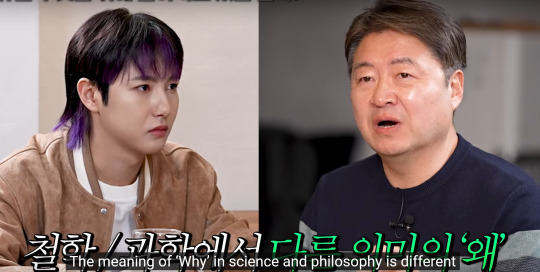

biologist kim eungbin references philosophers a lot eh. he says that according to plato, the two ways that people leave memories is either through offspring or through great achievements. he also says that because we are mortal, we make every day count.
jung youngjin is saying that the meaning to life will change when renjun has a child haha. renjun was the one who brought up the meaning of life, and the direction of civilization. and jung youngjin counters that here with the fact that the protection instinct of parents towards their children is the instruction manual.

lol drag him

renjun brings up the topic of cloning vs offspring, and whether offspring is necessary if we can just clone ourselves. yes and no. if we can clone at will, then perhaps we might not need offspring. but the point of offspring is that the ones who carry our best traits will live on, so that each generation after us will be more able to survive in their environment via natural selection.
jung youngjin looks at this more from the emotional side, about how there's beauty in variety. i think it does come back to sociology a bit. with variety, then you have people who are good at different things, and they can all make the group stronger in different ways.
ah yeah, jung youngjin brings up the point i made earlier, about how civilization wouldn't advance if we were just cloning ourselves
oh interesting, so even microorganisms who reproduce by splitting (mitosis?) don't make exact copies of themselves 100% of the time.

even germs have herd mentality of caring for the young ones :o
hardcore fan

wait what. i too did not know that eggs are a single cell lol.

sixth topic: is there a creature that doesn't need water?
renjun going full neo culture technology and imagining AI as a civilization. i was thinking along the lines of a being that would survive on another chemical/substance.
kim beomjun brings up a good point. water is very unique because it can exist in different states very easily. it melts at zero degrees celsius, and it evaporates at 100 degrees celsius, both temperatures that we can attain easily naturally

jung youngjin: can alcohol replace water?
ah right, i remember polar molecules from chemistry...a long time ago lol. but i think the idea is that alcohol can't really change states naturally like water can.
ji woongbae explains that water is easier to find anyway, as it's a pretty simple molecule (H2O)
seventh topic: can humans live with AI in the future?
ah so the scientists agree that depending on the definition, AI could be defined as a living creature because it fits some criteria, such as being able to react to stimuli
oh man this is in kim eungbin's wheelhouse haha. he's saying that defining life itself is a challenge. they can't even decide if a virus is alive. and they also have to define life in order to be able to define death as well.
lol smoothie promotion time. it feels so random now.
aw jisung got interested in science and philosophy because of his dad and his dad likes the channel too :3
hi dad :3

jung youngjin: to nct fans watching this, please don't just watch the rensung supercut
this was a lot of fun!!!!!!! space and science are topics that interest jisung and renjun personally. so because they were so immersed in the discussion, i was as well. in addition, i appreciated that the scientists explain things well. it was a really interesting discussion!!!!
10 notes
·
View notes
Text
what space name did we as a fandom decide for scar???????????
cause if grain is the sun you could totally do some star close to the Sun like Proxima Centauri (This one is more me enjoying space, and I have compared Scar to this specific star in a 3rdlife fic before)
Although Scott is The Stars, and Proxima Centauri is long and I get not wanting to use it
We could finally use the comet/metor name that people tried to use for Martyn before Mars stuck
Or (my personal favorite) we can call him Mercury, not only is Mercury the closest planet to the sun, but it's the name and symbol of the Roman god Mercury (or the Greek God, Hermes) the god of communication, trickery, financial gain (among other stuff). The planet itself shares symbolism for communication.
All i'm saying is we have no much potential for Scar here, I know the fandom was wanting to call the winner Venus and it would be pretty ironic for the guy who had no friends to be named after a symbol for love, but I think we can do a lot better
#tldr: Ray wants to write a fic#but doesn't know what we as the fandom have decided winner scar's name is#someone tell me so i can write this#secretlife spoilers#secret life spoilers#goodtimeswithscar#gtwscar#secret life#trafficblr#traffic smp
12 notes
·
View notes
Text
[btw most of these headcanon names are based on this theory post about the 4 Collectors. Pls read it, it's very good]
since it's been confirmed that there are multiple Collectors, what are y'alls headcanon names for each of them?
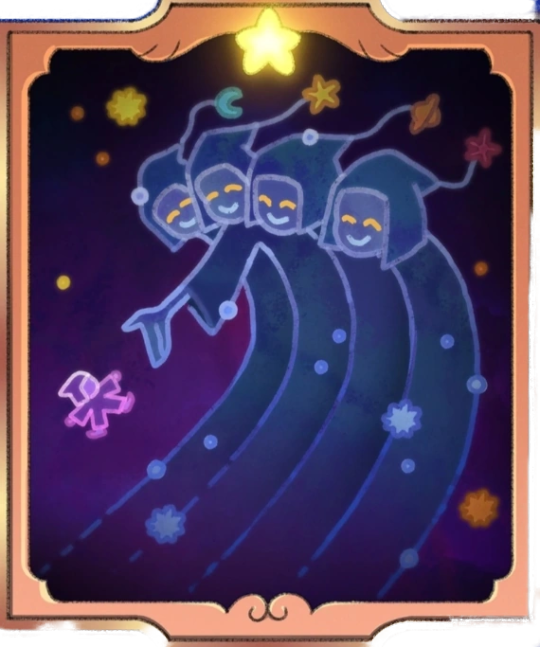
I know some people call baby Collector 'Colly', but maybe we could come up with more appropriate names for them?
I thought of 'Proxima', named after the red dwarf star that is closest to the sun. Red dwarf stars are also the smallest and coolest stars, representing how little Collector is the smallest one, and is likely the least temperamental compared to the other four Collectors.

Proxima also works since the Collector with the yellow star (which can be interpreted as a 'sun') is the one with their arm outstretched to the baby Collector, representing how close the two possibly were. (also if we name them Proxima their nickname can be 'Proxy' which is funny if u know creepypasta)
I also thought of 'Tauri', named after the T Tauri star, which is the youngest red dwarf star ever recorded. Again, representing how baby Collector is the youngest of the 5.

For the 'Moon Collector', I thought of naming them 'Leda', after the smallest moon of Jupiter, considering how they're the second youngest of the Collectors. I couldn't find what the second smallest moon of Jupiter was, so if someone knows please let me know because that will be my official hc name for them.
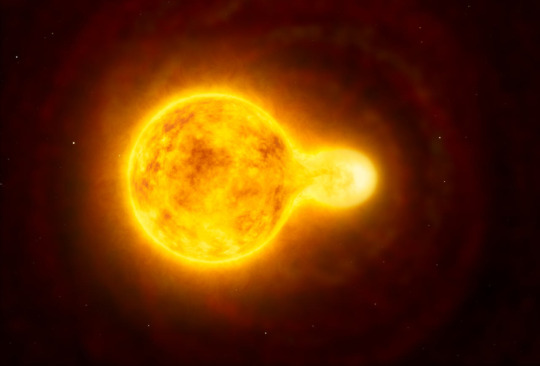
For the 'Yellow Star' or 'Sun Collector', I've named them 'Polaris', after the biggest star in the Ursa Minor constellation. I mostly chose this name because it sounded nice.
A more lore-related name could be 'Centaurus', after the constellation that holds the biggest yellow hypergiant star ever found. The ACTUAL yellow hypergiant is stupidly named 'HR 5171' instead of something cool, so bear with me here. I'm gonna go with 'Centaurus', since this constellation is the same one where 'Proxima Centauri' is located, and this goes well with the yellow star Collector being closest to the baby Collector.
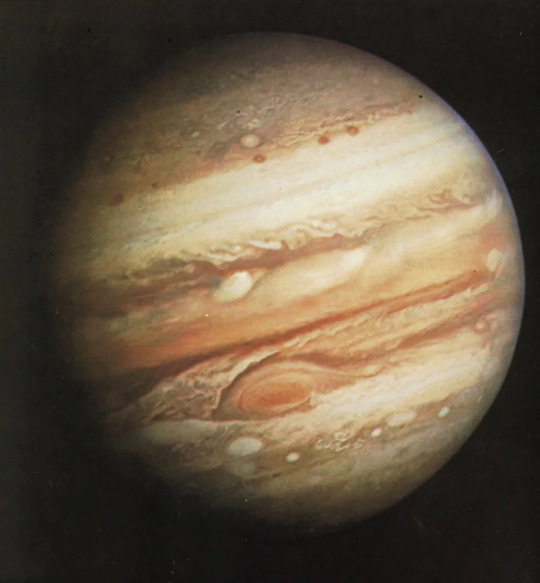

The 'Planet Collector's' name is pretty obvious, I'd either name them Saturn or Jupiter. I imagine them being the more 'protective' or the 'guardian' of the group, so I prefer the name Jupiter here.
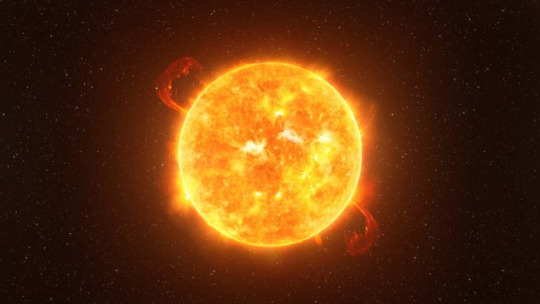
Finally, for the 'Red Star' Collector, I'd name them 'Betelgeuse', after the Betelgeuse star. It is a red supergiant and one of the largest visible to the naked eye. This name is absolutely perfect, especially if we believe that the Red Star Collector is the eldest of the 5.
So Proxima, Leda, Centaurus, Jupiter and Betelgeuse, the 5 Collectors who wiped Titans from existence. Hope y'all enjoyed the name headcanons, and please please please tell me yours! I'd love to know!
#toh#the owl house#toh theory#toh headcanon#theory#headcanon#name headcanon#toh name headcanon#toh collector#toh the collector#the collector#toh collectors#toh 4 collectors#toh collector headcanon#collector headcanon#toh collector headcanon names#collector headcanon names#headcanon names#toh hc#stars#astronomy#planets#btw this is what I'm gonna call of the Collectors from now on#I'm just gonna link this post whenever I mention them
53 notes
·
View notes
Text
Okay actually I've gotta elaborate on the star thing because in a couple continuities, Cybertron's star is quoted as Alpha Centauri. Now that's a very specific star system, by the way, and I'm going to assume the franchise just picked a random star name out of a bucket but I'm going to overanalyze this.
It's actually a triple star system, meaning Alpha Centauri isn't one star but three: Rigil Kentaurus, Toliman, and Proxima Centauri. (apparently Proxima Centauri is also the closest star to our sun, Sol, at 4.2465 light-years) and Proxima Centauri is weeeeee little compared to the other two. Niw, the first two are Sun-Like and form their own binary system, with Proxima being a red dwarf star if my memory serves right doing a lazy circle around both. The binary two, which form Alpha Centauri AB, look like one single star in our night sky and would be the third brightest (Sirius and Canopus being the other two brighter ones)
Apparently actually, the constellations would look roughly the same from Alpha Centauri AB's perspective as we see on earth, minus Centaurus's brightest star as well fuck that's where we are in that sector of space.
Also, a tidbit!

Holy shit would Cybertrom be a lot closer to us than you'd expect, and we'd have just about the same constellations too
33 notes
·
View notes
Text
Timeline of the near-to-mid future
FTL and false Rare Earth hypothesis edition
50,000 YA: apparent emergence of “behavioral modernity” among humans
25,000 YA: Flourishing of the last common ancestor of the Delta Pavonis clade[1]
22,000 YA: Final breakup of the Delta Pavonis clade
13,000 YA: Settlement of Kraithong[2] by the ancient Chalawani
9,000 YA: Settlement of Tigurinus by the ancient Helvetosians
6,000 YA: Saffarid civilization creates the offshoot Titawinese civilization.[3]
3,000 YA: first urban human civilizations emerge in the Fertile Crescent
2,100 YA: Re-establishment of contact between the Helvetosians and Chalawani.
1684: Chalawani make first contact with the Titawinese.
1957: Launch of Sputnik 1; beginning of the First Space Race
1961: First human spaceflight
1969: First spaceflight landing on Earth’s moon
2043-2058: First crewed missions to Mars
2112: First commercial asteroid capture and mining missions; approximate beginning of the Second Space Race
2164: Permanent human presence established in the outer Solar System
2187: First colonization mission to another star launched, the Terranova expedition to Alpha Centauri. Contact lost two years later; crew presumed deceased.
2223: First successful colonization mission to another star launched; the Heilongjiang arrives in the Alpha Centauri system. The crew reports the first discovery of plant and animal life beyond the Solar System, putting the final nail in the coffin of the so-called Rare Earth hypothesis.
2256: Hsieh Hsiu-Ying, Marchioness of Shensi, develops the first faster-than-light drive. Her vessel, the Nomad, vanishes during the test, and is presumed destroyed for the next 98 years.
2263: Founding of the Renewalist movement in Indonesia
2297: Renewalist settlement of Mars
2335: Outbreak of the Solar Fitna.
2336: The Younger Nomad, designed on the same principles as Hsieh’s Nomad, is launched from Tarqeq under fire. Later that year, the Younger Nomad recovers the Nomad, and Hsieh’s remains, in orbit of Vega.
2357: Alamgir Thrice-Gloried marshals his forces for the final conquest of the Earth, intending to build an empire that spans the entire Solar System. On August 24th, the Younger Nomad returns at the head of an FTL fleet dispatched by Earth’s nearest colonies, credibly threatening to continue the war from outside the Solar System. Alamgir’s supporters desert him, and his coalition collapses. The Second Renaissance begins.
2371: The first FTL exploration ship, Earendil, is launched from the Solar System.
2374: Second Treaty of San Francisco officially ends the last unresolved conflicts of the Fitna; Part 2 of the Univeral Declaration of Human Rights promulgated; Control established as the universal enforcement body for human rights.
2383: The so-called Proxima Framework is established to govern interstellar relations between polities of the Solar System, the Alpha Centauri system, Barnard’s Star, Luhman 16, Wolf 359, and Luyten 726-8. If not dated from the events of 2357, or the launch of Earendil in 2371, the Third Space Race is generally reckoned to begin at about this date.
2481: Humans establish a permanent presence in the Groombridge 1618 system, including on the world later named Osmia; humans fail to recognize the native Osmians as fellow sentients, and cause severe damage to the planet’s environment as a byproduct of industrial activities, leading to the so-called Great Mistake.
2503: Recognition of Osmian sentience causes one of the first large-scale interventions by Control outside the Solar System. Osmia is evacuated of all human presence, and the first contact process begins.
2619: Survey ship Zakynthos encounters the Helvetosians in orbit of Dimidium (51 Pegasi b), marking first contact with an advanced alien civilization. Communication proves far more difficult than it was even with the Osmians, due to fundamental differences in human and Helvetosian language-processing and cognition.
2624: Helvetosians facilitate first contact with the Chalawani.
2670: Human first contact with the Titawinese.
2690-2720: Ongoing difficulties with diplomacy and communication, especially caused by the “Earth civilization” (as the alien polities tend to term it) being in a particularly expansionist phase, lead to discussions of a formal set of institutions through which to transact interstellar diplomacy. The particularly fragmentary nature of human politics stalls development of these institutions until the creation of the Teegarden System, which incorporates almost all large human polities, including those with interstellar capabilities.
2720-2717: Negotiations finally produce the so-called “Primary Accord,” a set of treaties which provides foundations for international, interspecies, and interstellar law; the humans of the Teegarden System, their Osmian clients, the Helvetosians, the Titawinese, and the Chalawani are the initial members. A small secessionist group of humans explicitly renounces the Accord, and departs for space beyond the Local Bubble.
2724-2733: The Machine War is waged among the artificial intelligences of Luhman 16 and nearby systems. Taking place primarily in brown dwarf star systems not desirable to other species, and for reasons which are deeply unclear (but ripe for speculation) to outside observers, the history of this war, including its causes and outcome, remains largely obscure. It seems to have been triggered in part by philosophical disagreements over the implications of the Primary Accord, though no faction which clearly opposes the Accord can be identified.
2730: An alliance of human, Helvetosian, and Titawinese scientific organizations found the Accord space exploration service, Frontier.
2780-2800: The process of political union in signatory worlds leads to the first informal references to the “Foundation,” a kind of supranational interstellar entity within an eclectic, harmonized legal framework. At first the term only covers certain core worlds with a high degree of participation in Accord institutions.
2801: The Sahul civilization joins the Accord. Their twin/cousin civilization, the Sunda, remain apart but on friendly terms.
2818: The Carcosan civilization joins the Accord.
2860: By this time, “the Foundation” is loosely synonymous with “Accord signatories,” though with an identifiable fringe of polities (not all of them physically remote from the core worlds of the Local Bubble) who participate less fully in Accord institutions.
2880-2890: Frontier reestablishes contact with the splinter human faction beyond the Local Bubble; though disunited, these groups all share a deep distrust of the Foundation, of the human worlds of the Teegarden System, and of Control. Owing to distance, contact remains intermittent for many years after.
2924: A large portion of the Elymite civilization joins the Accord.
2929: Political fallout from the Elymite accession sparks the Foundation-Sicani War, with the latter refusing to accept Elymite accession, regarding the Elymite worlds as permanently subordinate clients. The war concludes in 2933, only because the Sicani are no longer physically capable of prosecuting it, and the Foundation is unwilling to invade core Sicani worlds to force capitulation. Repeated minor conflicts flare up throughout the 30th century as a result of this war’s indecisive outcome.
2940: The DSEV Soliton is launched, the first of many multi-year missions of exploration of the further galaxy.
2950-3200: The First Golden Age of the Foundation. Many worlds join the Accord, including some fringe worlds of species already long represented in its ranks; major scientific advancements greatly improve lifespans and standards of living across the entire Foundation, and hundreds of new worlds are terraformed and colonized. In the 3100s, Control attempts to infiltrate some of the fringe human worlds beyond the Local Bubble, both as an exercise in intelligence gathering and in an attempt to restrain what they see as increasingly dangerous and militaristic/authoritarian behavior in those worlds’ governments. This infiltration largely fails, but what information is gathered is greatly disturbing to Foundation leadership.
3250-3275: Philosophical and artistic confllicts cause a major political shift within the Titawinese; polities representing more than 85% of the Titawinese population abruptly secede from the Foundation, and the Titawinese Civil War breaks out as a result. Although the Foundation is officially neutral, minor outbreaks of violence occur within Foundation jurisdiction, especially in those Titawinese polities which remain members. Despite efforts at mediation, the war becomes increasingly bloody, and billions of Titawinese are killed, with billions more becoming refugees. Ultimately, a large fraction of the Titawinese flee the Local Sector, and the remaining survivors gradually rejoin the Foundation. Never the most numerous species, the numbers of the Titawinese on Foundation worlds are considerably reduced.
3291-3318: Renewed attempts at infiltration by Control trigger small-scale armed conflict with the outlander worlds; several major human polities escalate these conflicts, determined to rein in the tyrannical and inhumane practices which flourish on planets beyond Control’s reach. In this, they are only weakly successful; ultimately, however, they only drive further militarization of the outlander worlds.
3325: In retaliation, an outlander faction launches a relativistic weapon that destroys the core world of Kildara. Six billion are killed immediately; millions more in the star system die in the aftermath, as relief efforts are insufficient to supply populations on the outer planets. The Foundation is deeply split on the response; finally, a separate coalition launches a punitive expedition against the outlander polities deemed most responsible for the attack. The Kildaran Expedition lasts until 3348, and while it easily occupies over a dozen outlander worlds, they return quickly to the political status quo when it departs.
3350-3450: A quiescent period within the Foundation itself; at the edges, private exploratory and colonization efforts greatly expand the limits of known space.
3461: A hegemonizing swarm centered on Rastaban (β Draconis), modeled on ancient feudal empires, arises in the outlander worlds spinward of the Local Bubble. The Foundation declines to intervene.
3485: The Rastaban empire, a human supremacist state now incorporating many worlds and other species (including Titawinese who fled the Bubble in the 33rd century) launches a major invasion of the outer Foundation worlds. This attack takes the Foundation by surprise, and marks the beginning of a long and highly destructive war.
3534: The Fifty Years’ War concludes with the final dissolution of the Rastaban empire. Many former Foundation worlds who felt insufficiently defended during the war (human and non-human alike) break away to form the Thalian Alliance, a smaller and more centralized union that maintains a permanent space navy. From this period on, the Foundation does not ever contain more than a plurality of the human or human-descended population.
3550-3950: The Grand Expansion, sometimes called the Fourth Space Race. The Local Bubble civilizations continue to explore and settle the nearby galaxy; in this time, more than thirty separate worlds or civilizations join the Foundation.
5th millennium: This period is, broadly, one of increasing localism; although formally united, the Foundation now encompasses many hundreds of star systems, and the limitations on warp drive speeds, and consequently both travel and communications, means that distant regions of the Foundation have little or nothing to do with one another. Crises, both internal and external, are now dealt with by smaller coalitions of worlds, at first on an ad-hoc basis; later, they are formally recognized. Lifespans for most species, at least, are very long, and people remain strongly attached to the idea of the Foundation, even if in practical terms it is increasingly seen to be more a symbolic association than anything else. As local coalitions take institutional precedence, even formal membership for colonies or newly-contacted worlds comes to be seen as superfluous.
6th millennium: Localism soon gives way to fragmentation; ideological divergence between different groups within the Foundation paralyzes its formal institutions. Vast sections of the Foundation secede--not so much by formal declaration, as by simply ceasing to consider themselves part of the organization. Yet on the ancient core worlds, like Earth and Tigurinus, you would hardly know that this is any kind of age of collapse: these planets are still impossibly prosperous by our own standards, and have a strong sense of unity with one another.
Late 6th millennium and 7th millennium: A major period of renewal. A new, leaner Foundation--now simply terming itself the Core--emerges from the sclerotic husk of the old one. The Core is a little more high-handed in its dealings with surrounding polities, but at the same time, its relative position is weaker: there are now dozens of interstellar polities as wealthy and populous as it, with histories nearly as long. The Core has, like its neighbors, thoroughly streamlined its organizational structures--the administrative borders of Earth would be unrecognizable to us now, but not because of wars or revolutions, but because all the old nation-states and supranational unions have mostly withered away. Successive centuries of legal reforms mean that many old foundational treaties and organizations, like the UN, the Teegarden System, or the Archipelago Treaty are no longer in force, but they are remembered as important historical predecessors of the current system, both in the Core, and among its siblings. Breakthroughs in warp drive technology drastically contract interstellar distances once again.
8th millennium: The Core now controls outposts as far as five thousand light-years away; the furthest human worlds are well beyond even this frontier. Long lifespans and fast warp drives mean exploratory missions to nearby dwarf galaxies are a possibility, but more than 95% of the Milky Way remains unsurveyed by most estimates. Interstellar warfare is still rare, but not unheard of--and when it does occur, it can be devastating. Planet-killers are a reliable way to get every polity that knows you exist to declare war on you instantly, but major conflicts can easily kill millions even without such weapons.
9th millennium: By this point, old distinctions of species have begun to seem rather antiquated: ultra-advanced biomedical technology and mind uploading technology means even the biological/mechanical distinction is pretty flexible. There are synthetic sophonts who can credibly claim to be equal parts human and Chalawani, despite their totally incompatible physiologies (they don’t even use the same genetic molecule); at the same time, pinning down a definition of “human,” given the dizzying array of descendants of that clade, would be pretty difficult. The span of lifestyle for individuals within the Core ranges from modosophonts who live much as you or I do, to sprawling collective intelligences or artificial superminds. By the close of this period, even the Core is not really a thing anymore (it had a good run--almost three thousand years). Archailects with even a passing interest in economics and sociology can help any society self-organize into a post-scarcity utopia. On the distant frontier, things might be different, but if you are strolling through the shining cities of Earth, that might as well be another universe.
[1] Delta Pavonis d was home to an advanced technological civilization (fl. 15,000-12,000 YBP) ancestral to both the Helvetosians (aka the Dimidians or Pegasids) and the Chalawani (aka Taphaon), as well as several other minor civilizations in the Local Bubble. But the so-called Delta Pavonis clade, named for this star system, encompasses a much broader category of civilizations, including the Delta Pavonis d civilization, the Helvetosians, the Chalawani, several civilizations well outside the Local Bubble, and their last common ancestor. The ultimate origin of the Delta Pavonis clade lies at least a thousand light-years away, in the direction of the constellation Taurus.
[2] Kraithong, like Tigurinus, is a human coinage, in this case a name derived from the same folklore that furnished the name of Chalawan (47 Ursae Majoris). Helvetosian and Chalawani vocal tracts do not resemble the human vocal tract, and the native names of these planets cannot be adequately transcribed using any human writing system.
[3] Note that alien civilizations have historically been named for the location of first contact, not their planet of origin or their name for themselves, which may not be ascertained for some time. The Titawinese or Samhese are indeed native to the Titawin system, though, originating on the moons around the second planet (catalogued on Earth as Samh, or υ Andromedae c). Their progenitors, the Saffarids, are named for the spectacular ruins they left in orbit of Saffar (υ Andromedae b)
23 notes
·
View notes
Text
On the Lack of New Wormholes
An excerpt from a lecture on Interstellar Travel 101 by professor Rchel Coligera of the University of Dawson Sphere, 3002 PX.
Now I can see that most of you have turned in your pre-course surveys and there was one question that just kept appearing. “Why aren’t we covering wormholes?” Well, I can answer that quickly: Wormholes are obsolete, expensive, and slow.
Yes, slow, I spoke correctly.
”How can that be?” You ask? Well that’s a bit more complicated.
How many of you are from Carrack? Okay, seven of you, good. How about Algernon? Eight, nice. Persephone? Eleven, really? Well, we’ve got quite a few relativist students, that’s no surprise for Interstellar Travel 101.
What would you say if I told you that under the Federation none of you would have left your home system?
At the Federation’s height it’s estimated that less than one in one hundred star systems were within a year’s travel of a wormhole. And most ships took close to a year to reach a wormhole, even the fastest ships of the Federation era took a month to travel from an inhabitable planet to the Oort Cloud where wormholes could be safely emplaced. Travel from systems without wormholes often took decades. You interstellar students are aware that by the time you return home your siblings and classmates will be middle-aged grandparents, unless they were fortunate enough to have access to leukosynths. But if you’d taken a wormhole to Alpha Centauri, they’d be long dead.
Sure, we could combine modern singularity drives with wormhole travel, but why would we? The wormhole network is gone, with a few rare exceptions. And it would be far too expensive to try and rebuild it.
You might have heard that the micro-singularities powering a 1,000-hydro-ton liner consumed a small planetoid, but the mass consumed to make transversable wormholes is measured in stars. We can only guess how many brown dwarfs were sucked up into Proxima Centauri’s StarForge. Just one brown dwarf could support a population of billions, as many peripheral polities have discovered after obtaining singularity drives, or build a fleet of thousands.
Due to this expense the StarForge took the better part of a century to produce the first traversable wormhole. Even in the Federation’s final century we only have records of four, maybe five new wormholes opening. This was one reason why 90% of all wormholes connected to the Alpha Centauri system, and collapsed when Sol went nova.
So, the better question is, why did the Federation bother with wormholes at all? Why didn’t they just build stellar swarms like the one you’re all sitting inside? Two words: Dispersal and security.
The Core Worlds were colonized by refugees from Sol after the Destroyers scrubbed the system of life. When the Federation formed they knew that the only way they could survive as a clade was to keep a low profile, thus they adopted a policy of spreading parahumanity thin across the stars. Since the Destroyers were apparently destroyed, the university has detected five other stellar swarms in the past two centuries, including around Alpha Centauri B, Tau Ceti, and Epsilon Eridani; the Federation’s Core Worlds.
As for the second point, the Federation could not tolerate competition. You might have heard of a “Pax Federaci” but I’m going to tell you right now that entire concept is revisionist bullshit. The university’s archaeological expeditions have uncovered sizable evidence that “deportations” to Outworlds were far more common than the records would indicate. Helped, naturally, by the Federation’s policy of erasing all evidence of the deported’s existence in the name of “memetic containment.” We have even discovered a few Outworlds that appear to have started as fully Federated colonies, only to be bombed back to the Stone Age later on.
So, yeah, we might be islands in space and time separated by years, but we’re more connected than ever.
#sci-fi#worldbuilding#technology#sci fi#scifi#fiction#transhumanism#dyson sphere#relativistic space travel
2 notes
·
View notes
Note
Vector Prime, does Cybertron have seasons like Earth, and if so what are they like and what are they called?
Dear Seasonal Seeker,
When Cybertron once orbited the Alpha Centauri system many millennia ago, the early inhabitants gave names to recurring patterns. I suppose you could refer to these as "seasons", even though ours sometimes overlap with each other and exist even when our world no longer orbits a particular star:
Pulse: early Cybertronians believed that Vector Sigma, in the core of our world, would issue a large energy pulse, sometimes leading to the creation of new hot spots. The detection of Vector Sigma's pulse began the season of Pulse, and served as the beginning of our "year".
Flux: radiation from Alpha Centauri A can interfere with energon, sometimes changing its color and properties. When energon lakes turn from purple to mostly blue, almanacs record that as the first cycle of Flux.
Summer B: when temperatures rise slightly due to Cybertron's orbit around Alpha Centauri B.
Prox: every 430 Earth-years, Proxima Centauri comes close enough to where its radiation can be felt—usually a time for vacation.
Winter B, Summer A: as you can see, Cybertron has a strange orbit around the Alpha Centauri triple star system.
Collapse: Cybertron's electrical internals and metal surface turns the world into a weak electromagnet, tending to draw metal-rich ore to it as comets and meteors. Meteor rain is very common and tends to be associated with introspection.
Omni-stice: the season when light from all three stars focuses on Cybertron. It is very brief—only a few Earth days—but dazzling. It is the end of our "year". Sometimes we also celebrate the Dark Season, when far from our stars: the Omninox.
#ask vector prime#transformers#maccadam#cybertronian language#alpha centauri#vector sigma#proxima centauri#Anonymous
34 notes
·
View notes
Text
Arbio is a large terrestrial planet in the Proxima Centauri system.
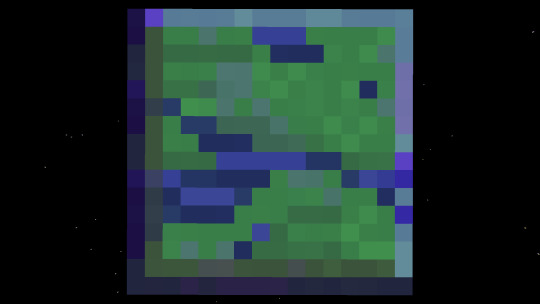
Its surface is covered in lush forests with many types of plant life, which also stretches far underground.


Arbio’s atmosphere is very thick, making it hard to see the sky from the ground, and making navigating tough. The climate is very humid most of the year.
It is home to one known intelligent species, but not much is documented on them.
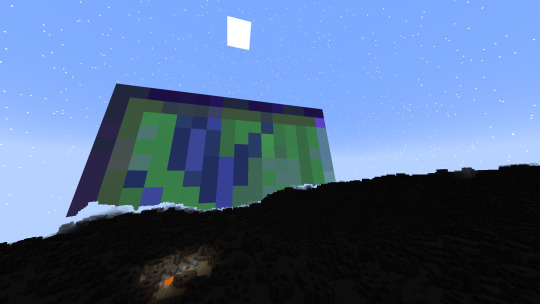
Arbio has one natural satellite, named Sai. It is a basic rocky world with no atmosphere.
7 notes
·
View notes